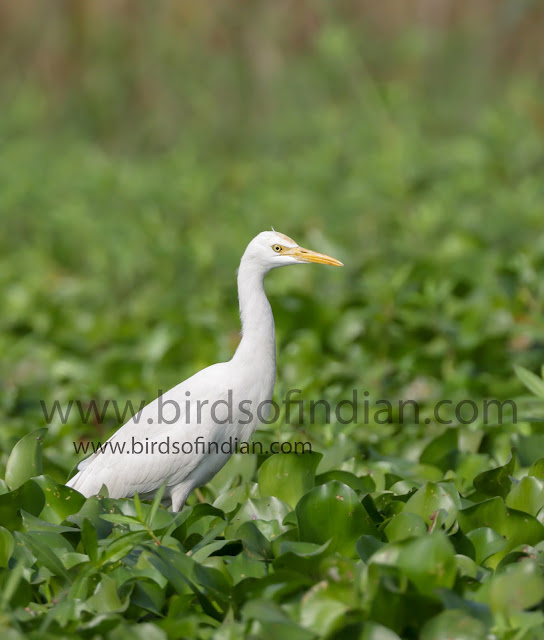The cattle egret, scientifically known as Bubulcus ibis, is a species of heron found worldwide in tropical and subtropical regions. Despite its name, it's not closely related to egrets but is rather a member of the heron family, Ardeidae.
The cattle egret (Bubulcus ibis) is a relatively small species of heron, measuring about 46 to 56 centimeters (18 to 22 inches) in length from the tip of the bill to the end of the tail. They typically have a wingspan of around 88 to 96 centimeters (35 to 38 inches). In terms of weight, they generally range from 270 to 512 grams (9.5 to 18.1 ounces).
As for their diet, cattle egrets primarily feed on a variety of small animals, especially insects. Their diet consists mainly of grasshoppers, crickets, beetles, flies, moths, caterpillars, and other invertebrates. They are often seen foraging in open areas, such as grasslands, pastures, agricultural fields, and wetlands, where they follow grazing livestock to catch insects that are disturbed by the movement of these animals. This behavior is what gives them their name "cattle egret." However, they also feed opportunistically on other food sources, including small fish, frogs, reptiles, and occasionally small mammals or birds.
In the Indian subcontinent, the cattle egret is a familiar sight, often seen accompanying livestock such as cows, buffaloes, and even camels. These birds are widespread throughout the region, found in a variety of habitats including agricultural fields, wetlands, grasslands, and even urban areas.
In India, they are commonly known as "Go-Bhutai" or "Gwaraaiya Pakshi" in Hindi, reflecting their association with cattle. They play an important ecological role by feeding on insects stirred up by the movement of grazing animals, helping to control pests in agricultural areas.
During the breeding season, which typically occurs in the monsoon months, cattle egrets develop breeding plumage characterized by buff-colored plumes on their head, neck, and back. They form colonies in trees, bushes, or even on man-made structures where they build nests and raise their young.
Overall, the cattle egret is a familiar and beneficial bird in the Indian subcontinent, where its presence is intertwined with the agricultural landscape and the lives of local communities.
The cattle egret is commonly found in various countries within the Indian subcontinent.
Some of the countries where cattle egrets are regularly seen include:
India: Cattle egrets are widespread throughout India, from the northern plains to the southern tip. They are commonly found in agricultural fields, wetlands, grasslands, and even urban areas.
Pakistan: Cattle egrets are also found in Pakistan, where they inhabit similar habitats as in India, such as agricultural fields, wetlands, and urban areas.
Bangladesh: In Bangladesh, cattle egrets are commonly seen in agricultural areas, especially rice fields, where they feed on insects disturbed by farming activities.
Sri Lanka: Cattle egrets are widespread in Sri Lanka, where they are commonly seen in agricultural landscapes, wetlands, and urban areas.
Please don't use these images anywhere without permission. © All rights reserved by Birds of Indian Subcontinent

Comments
Post a Comment